Critical Steps for Preventing Boat Collisions on Waterways
Boat collisions are just as dangerous as car accidents. According to the United States Coast Guard, between 9 and 110 people die in a boat accidents every month. The most dangerous time of year to be out on the water is between October and January.
Primary Contributing Factors to Collisions: U.S.C.G (2023)
| Collision factor | Accidents | Deaths | Injuries |
| Alcohol and drug use | 225 | 90 | 203 |
| Excessive speed | 299 | 26 | 214 |
| Improper lookout | 421 | 30 | 284 |
| Navigation rules violation | 210 | 16 | 134 |
| Operator inattention | 586 | 33 | 323 |
| Operator inexperience | 414 | 44 | 200 |
Fortunately, there are plenty of things you can do to avoid having a collision. Many of these tips remain the same whether you are driving a motorboat, sailboat or PWC. Let’s review the most important points.
1. Be familiar with navigation rules to avoid colliding with another boat
Driving a boat or PWC safely requires a knowledge of all relevant marine navigation rules and regulations.
You can easily avoid shipping lanes, pass other vessels on the correct side, and follow the directions indicated by buoys and markers if you know the rules of right of way!
When you take a paid boating safety course, you learn everything you need to operate a pleasure craft safely in the state where you live. At the end, you’ll be awarded a boat license, which will prove that you know what you are doing so you can take to the water legally.
Find out all about your responsibilities as a boat operator, get to know the difference between port and starboard, and more by getting your official, lifetime boating license.
2. Operate your pleasure craft at the right speed, especially at night
There are speed limits for beating, just as for driving a car. In 2023, the date of the most recent statistics from the USGC, excessive speed was linked to 228 boating accidents in the United States and 26 deaths. Disobeying these limits can not only lead to fines, but to potentially deadly collisions.
Operating your boat at slower speeds at night is especially important. In fact, the risk of collision is highest from late evening to the middle of the night. This may come as a surprise, since waterways are generally busier during the day. However, there are additional obstacles to safe boating at night, in particular reduced visibility.
3. Always be visible to other boaters
Boating safety equipment includes navigation lights, which should be used both at night and during any low visibility during the day.
It is particularly challenging to stay visible during rough weather. Carry a radar reflector and an operational VHF radio. Remember, you can also alert other boaters to your presence with sound (horns, whistles, etc.).
3. Keep a lookout at all times to avoid colliding with another boat
Stay alert! Operator inattention is the leading cause of boating collisions in the U.S.
You should also assign another person to keep a proper lookout while you are driving your boat. Since you cannot see around you at all times, they can help by keeping watch over areas that are hard to observe, such as behind or beside the vessel.
Always stay clear of diving flags and people in the water (to avoid propellor strikes) and anchored vessels.
Remember that floating debris and swimming animals can also pose a risk. When the sunlight gleams on the water, it can be difficult to identify what you see, so adjust your speed accordingly, and return to shore or find a place to drop anchor if you need a break.
4. Make safe turns: avoid collisions due to mechanical limitations
Turn your vessel at a safe speed, and look where you are going.
Boats do not handle like cars, and it can be tricky to remember that your control over your vessel is limited. Turning too sharply or without checking to make sure the coast is clear can lead to collisions and capsizing. Turning into a narrow channel or passing a large vessel can pose additional risks.
Steering a PWC, is even trickier than steering a boat, since the steering mechanism relies on the jet propulsion system. Know your vehicle, practise in a safe place, and get familiar with the limits of your equipment so you can turn safely.
5. Boat smart: consider the weather, your passengers, and your own condition
Only drive a boat if you are sober, in good health and well-rested. Operating a vessel while using alcohol or drugs is illegal and dangerous.
Boating with infants and children or dogs can be distracting. If you are enjoying water sports, you may also be tempted to focus more on the person or people being towed than on driving.
Check the weather forecast and avoid boating in rough water or when a Small Craft Advisory is in effect.
Always use common sense and be prepared for the unexpected.
Get ready to take to the water safely with a safe boating course!
Remember, if you have been in an accident in which property was damaged or someone got hurt, you will need to file a report. Under some circumstances, not doing so could constitute a violation of United States law.
Not sure if you have enough experience to take to the water without risking a collision? You can improve your confidence by taking an online boating safety course and getting your boater card.
Drive A Boat USA can help you get certified in California, Florida and New York!

